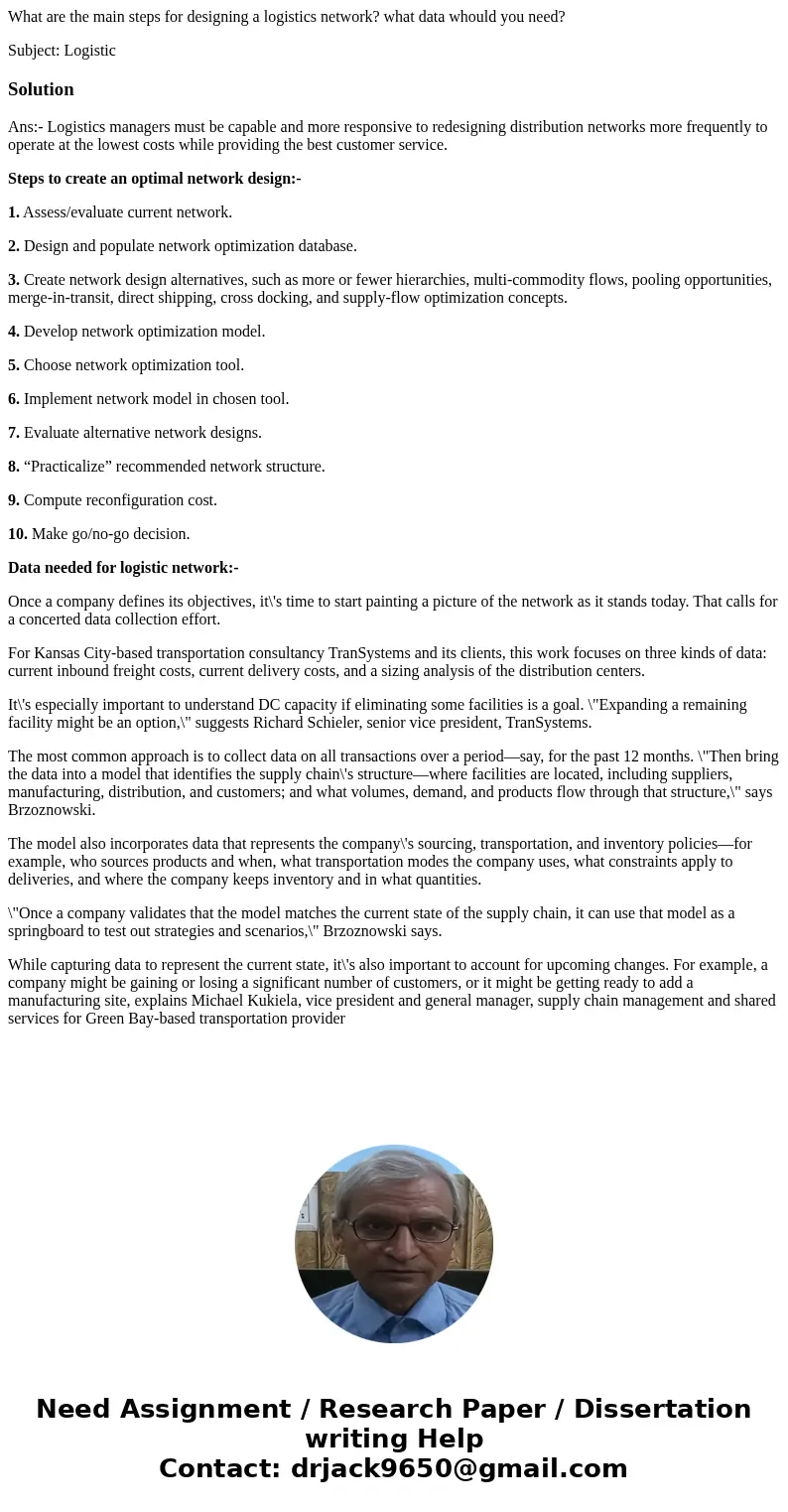What are the main steps for designing a logistics network wh
What are the main steps for designing a logistics network? what data whould you need?
Subject: Logistic
Solution
Ans:- Logistics managers must be capable and more responsive to redesigning distribution networks more frequently to operate at the lowest costs while providing the best customer service.
Steps to create an optimal network design:-
1. Assess/evaluate current network.
2. Design and populate network optimization database.
3. Create network design alternatives, such as more or fewer hierarchies, multi-commodity flows, pooling opportunities, merge-in-transit, direct shipping, cross docking, and supply-flow optimization concepts.
4. Develop network optimization model.
5. Choose network optimization tool.
6. Implement network model in chosen tool.
7. Evaluate alternative network designs.
8. “Practicalize” recommended network structure.
9. Compute reconfiguration cost.
10. Make go/no-go decision.
Data needed for logistic network:-
Once a company defines its objectives, it\'s time to start painting a picture of the network as it stands today. That calls for a concerted data collection effort.
For Kansas City-based transportation consultancy TranSystems and its clients, this work focuses on three kinds of data: current inbound freight costs, current delivery costs, and a sizing analysis of the distribution centers.
It\'s especially important to understand DC capacity if eliminating some facilities is a goal. \"Expanding a remaining facility might be an option,\" suggests Richard Schieler, senior vice president, TranSystems.
The most common approach is to collect data on all transactions over a period—say, for the past 12 months. \"Then bring the data into a model that identifies the supply chain\'s structure—where facilities are located, including suppliers, manufacturing, distribution, and customers; and what volumes, demand, and products flow through that structure,\" says Brzoznowski.
The model also incorporates data that represents the company\'s sourcing, transportation, and inventory policies—for example, who sources products and when, what transportation modes the company uses, what constraints apply to deliveries, and where the company keeps inventory and in what quantities.
\"Once a company validates that the model matches the current state of the supply chain, it can use that model as a springboard to test out strategies and scenarios,\" Brzoznowski says.
While capturing data to represent the current state, it\'s also important to account for upcoming changes. For example, a company might be gaining or losing a significant number of customers, or it might be getting ready to add a manufacturing site, explains Michael Kukiela, vice president and general manager, supply chain management and shared services for Green Bay-based transportation provider

 Homework Sourse
Homework Sourse